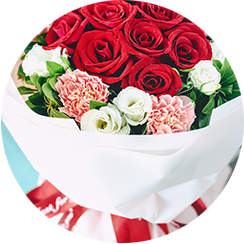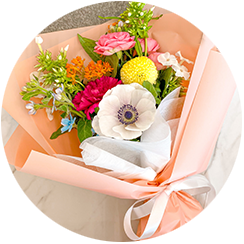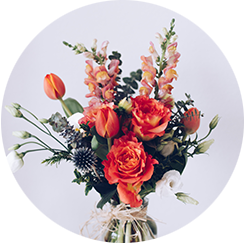Unlock the Well-Being Influence of Flowers on Your Mood
Posted on 20/05/2025
Unlock the Well-Being Influence of Flowers on Your Mood
Flowers have enchanted humankind for centuries with their vivid colors, mesmerizing scents, and natural elegance. But beyond their aesthetic value, flowers wield a remarkable influence on our mood and emotional well-being. Whether you're gifting a bouquet to a loved one, arranging blossoms in your living room, or strolling through a garden, the presence of flowers can profoundly uplift your spirits and enhance your mental state.
Why Do Flowers Affect Mood?
The connection between flowers and happiness isn't just a cultural notion--it's backed by scientific studies and centuries of anecdotal evidence. When you bring flowers into your environment, you unlock the positive psychological, emotional, and even physical benefits that these natural wonders offer. But how exactly do flowers boost our well-being?
1. The Science Behind Flowers and Emotions
- Visual Stimulus: The vibrant colors and symmetrical patterns found in flowers naturally attract our attention and stimulate positive responses in the brain. Research from Rutgers University suggests that individuals who receive flowers experience elevated happiness and genuine smiles--often lasting for days after receiving the blooms.
- Aromatherapy Benefits: Many flowers emit scents that are known to soothe nerves and calm anxiety. Lavender, for example, is famous for its ability to decrease stress levels and promote relaxation. The fragrance of roses, jasmine, and chamomile also offers mood-boosting effects.
- Symbolic and Cultural Significance: Flowers are often connected with positive life events--weddings, births, anniversaries--which stores them in our subconscious as triggers for joy and celebration.
2. Flowers as Natural Stress Relievers
Life can be overwhelming, but flowers offer an accessible antidote to stress. Studies have revealed that simply being around flowers can lower blood pressure, reduce physical signs of stress (like elevated heart rate), and improve concentration. In hospitals, patients with fresh flowers in their rooms have reported feeling less anxious and more optimistic about recovery.

Unlock the Well-Being Power of Flowers in Your Daily Life
If you're looking for practical ways to enhance your mood naturally, consider integrating the influence of flowers into your everyday routine. Here are some easy yet effective strategies to invite floral well-being into your world:
1. Decorate Your Living Space with Blooms
- Choose Mood-Boosting Colors: Yellow flowers like sunflowers and daffodils are great for sparking energy and joy. Blue and lavender tones, such as hydrangeas and irises, promote tranquility and calmness.
- Strategic Placement: Place fresh bouquets or potted flowers in the areas where you spend the most time--your kitchen, workspace, or entryway. Seeing and smelling flowers throughout the day helps maintain a positive atmosphere.
- Seasonal Rotations: Rotate blooms to match the seasons and keep the sensory experience fresh.
2. Harness the Power of Gifting Flowers
Giving flowers to friends, family, or even coworkers is a proven way to foster happiness, connection, and gratitude. According to research, both the giver and receiver experience a boost in mood that can last for days.
- Personalize Your Gifts: Tailor your flower choices to the recipient's favorite colors or meanings to enhance emotional impact.
- Include Thoughtful Messages: A heartfelt note with your floral arrangement can multiply the positive influence of your gesture.
3. Explore Flower-Based Mindfulness Practices
Mindfulness is about being present and fully engaged in the moment. Flowers offer a beautiful focal point for meditation, reflection, and relaxation.
- Flower Arranging: Immerse yourself in the rhythmic motions of floral design as a form of creative meditation.
- Sensory Observation: Take a few moments each day to sit quietly with a flower, noting its scent, color variations, textures, and form. This simple practice invites calm and clarity.
The Science of Flowers and Mental Health
Multiple scientific studies have explored the link between the presence of flowers and improved well-being. Here are some compelling findings:
1. Flowers Elevate Positive Emotions
- A landmark study by Jeannette Haviland-Jones, Ph.D., at Rutgers University found that people who received flowers demonstrated increased happiness and life satisfaction immediately and even days after receiving blooms.
- Flowers have been shown to trigger feelings of gratitude, compassion, and relaxation in diverse settings.
2. Flowers Can Reduce Depression and Anxiety
- In care homes and hospitals, patients exposed to fresh flowers report lower rates of depression and improved recovery.
- Certain floral scents (lavender, rose, chamomile) interact with the nervous system to decrease anxiety and promote restful sleep.
3. Flowers Enhance Social Connections
- According to Harvard research, the presence of flowers in communal or public spaces increases friendliness, cooperation, and even random acts of kindness among people.
- Gifting flowers is a universal way to solidify relationships and express care.
Flower Varieties and Their Unique Mood Benefits
Every flower type offers its own distinct emotional effects. Understanding which flowers to choose for specific mood goals can help you unlock their full well-being influence:
- Sunflowers: Known for radiating joy and optimism, sunflowers boost energy and dispel gloom.
- Lavender: Instantly calming, lavender is ideal for relaxation, sleep hygiene, and stress relief.
- Roses: Symbolic of love and appreciation, roses elevate feelings of connection and compassion.
- Peonies: Connoting abundance and prosperity, peonies instill hope and excitement for the future.
- Tulips: With their cheerful bulbs, tulips usher in renewal and fresh starts, perfect for mood resets.
- Daisies: Their simple, open faces bring lightness, innocence, and calm to any space.
How to Select the Right Flowers for Your Mood
Consider the emotional effect you wish to achieve, then choose flowers accordingly. If you're seeking tranquility, opt for soft blues, greens, and purples. When you need motivation, select vivid reds, oranges, and yellows.
Practical Tips to Sustain the Well-Being Effects of Flowers
1. Care and Maintenance
- Trim the Stems: Cut stems at a 45-degree angle under water to encourage longevity.
- Change the Water: Refresh the vase water every 2-3 days to reduce bacterial growth.
- Remove Wilted Petals: Keep arrangements tidy by removing dead leaves or blooms promptly.
- Provide Proper Light: Place flowers in a spot with indirect sunlight for maximum freshness.
2. Appeal to Multiple Senses
- Visual: Mix colors, shapes, and sizes for a dynamic arrangement.
- Olfactory: Combine fragrant flowers for an all-day sensory boost.
- Tactile: Occasionally touch petals (gently!) or engage in mindful arranging for a soothing experience.

Unlocking Well-Being: Beyond the Vase
The mood-boosting potential of flowers stretches far beyond simply placing them in a vase. If you want to deepen your relationship with flowers and access their full well-being benefits, try these creative approaches:
1. Flower Gardening for Mindfulness and Exercise
Gardening offers both physical activity and mental reward. Tending to flower beds, whether on a windowsill or in a backyard, cultivates patience, attention, and a sense of accomplishment. Research shows that gardening can reduce depressive symptoms and enhance overall mood through exposure to sunlight, physical movement, and tactile engagement.
2. Floral Arts and Crafts
Engaging with flowers creatively--through dried flower art, petal pressing, or floral design--not only sparks joy but also strengthens focus and provides stress relief. These artistic outlets transform the experience of flowers into long-lasting memories and decorative keepsakes.
3. Incorporate Flowers in Relaxation Rituals
From bathing with rose petals to sipping on chamomile tea, incorporating flowers into self-care routines can amplify their mood-enhancing properties. Use essential oils, natural perfumes, or flower baths to create a holistic sensory haven at home.
Conclusion: Let Flowers Unlock Your Inner Well-Being
Unlocking the well-being influence of flowers on your mood is as simple as saying yes to nature's beauty. Flower power goes beyond fleeting decoration--it's a source of sustained happiness, relaxation, and emotional resilience. By nurturing a relationship with blooms, either through daily rituals, mindful observation, or creative projects, you can tap into an ancient wellspring of joy that nurtures both body and mind.
Whether you're decorating your home, giving a thoughtful bouquet, or spending time in a blossoming garden, remember: the mood-enhancing magic of flowers is always within reach. Let blooms be your daily invitation to a brighter, calm, and more centered life.
Unlock the Full Potential of Flowers for Well-Being Today
- Bring home a new bouquet this week and observe how it changes your environment and emotions.
- Gift flowers to someone dear and notice the ripple of happiness it creates.
- Start a simple flower-based mindfulness practice and see how your stress levels shift.
Ready to experience the transformative power of flowers? Begin your journey to better mood and well-being with the beauty and vitality of blooms.
Latest Posts
Ultimate Care Tips for Your Cut Flowers
Keep Poinsettias Alive and Thriving This Season
The Unwritten Romance of Red Roses on Valentine's Day





